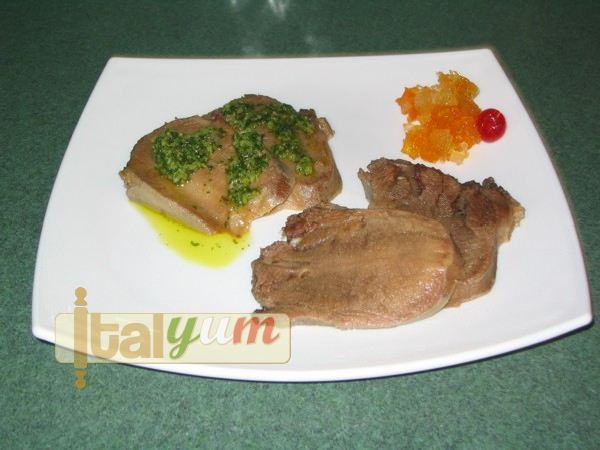
Mixed boiled meats (Bollito misto cremonese)
This is one of the classics from Lombardy region of Italy and it is about boiling different type of meats and serving them with salsa verde and mostarda cremonese. A rustic dish with no fuss and lots of flavour, which is a very popular choice for those who live around Cremona, a beautiful city set along the river Po’ and famous for the torrone (nougat) and for the many workshops of the violin makers you can find around the city. Cremona is a real gourmet treat location, where you will be able to taste proper, North Italian traditional food (marubini in brodo is another speciality of Cremona).It is worth a visit if you happen to be around there, especially in November where you can have the chance to attend the torrone festival. Now, coming back to our bollito misto (mixed boiled meats), to make a Gran bollito cremonese (wich is different from other recipes like the Gran bollito piemontese for example) you need at least 5 different types of meat, which will have a different boiling time of course, so you need to start with the pieces of meat that take longer to cook. When preparing a good bollito misto we need to remember that we cannot have great flavourful meat and exceptionally good stock at the same time. If you want a good stock you need to put the meat in the pan when the water is still cold, but the meat at the end will not have much flavour. For a perfect bollito misto you need the meat to retain most of its juices and flavour so it is important to drop the meat into the pan when the water is boiling. Then, bring the water to a simmering point and cook for the required time, skimming the surface regularly so that we get rid of the scum that comes afloat. For simplicity, I will show you how to cook only one piece of meat and how to prepare the salsa verde. Then, I will give you a list of possible meat choices so that you can pick up your five favourites to complete your bollito misto. Last but not least, this is about traditional and simple Italian cooking so please don’t make it complicated adding alien vegetables to flavour the boiling water; in Italy we mainly use onion, carrot and celery (leek and bouquet garni have nothing to do with this recipe and are more relevant to the French cuisine).In the past all the different meats were put in the same huge pan at different stages according to their cooking time; however it is more practical to have two or three separate pans. Each pan should be filled with water, lightly seasoned with salt and in each pan add one onion (studded with of cloves), two carrots and two celery stalk. Another reason why it is better to use different pans is because at the end you have the option to use some stock from the pan to finish the dish and usually the stock we use to complete the dish is from the pan where we boiled the beef and the hen. A second pan could be used for the ox tongue and veal cheeks, whose stock can be used for other preparation in you like, and a third pan will be used to boil the cotechino sausage; for this latter we will discard the water and if you are using a pre-cooked cotechino/zampone you can also avoid putting flavouring vegetables in the water because a pre-cooked cotechino will cook in 30 minutes and usually is vacuum packed, so it is not worth putting anything other than water in the pan.Here below I am giving you a list of possible choices to complete the serving. It is worth preparing the bollito misto if you have between 8-12 guests, so chose the meat pieces according to the number of people to be served. Besides each meat choice I am also giving you the approximate boiling time, but be aware that boiling time can vary according the meat piece size and type.Ox tongue (fresh): 3 to 3 ½ hoursVeal tongue (fresh): 2 to 2 ½ hoursPig’s trotter: 3 hoursBeef brisket (roughly 1.5 Kg – 3 pounds 5 ounces): 3 to 3 ½ hoursVeal silverside (roughly 1.5 – 3 pounds 5 ounces): 3 hoursBoiling hen (roughly 2 kg – 4 pounds 7 ounces): 2 to 2 ½ hoursVeal’s cheek: 2 to 2 ½ hoursPre-cooked cotechino sausage or zampone: 30 minutes (see at the end of the recipe for more information)
Equip your kitchen – Available at Amazon now
Clicking on equipment pictures takes you to Amazon where you can buy the items. We get a small revenue share of anything you buy which helps keep the site running.
Ingredients
- 1 Ox tongue (it will require roughly 3 to 3 1/2 hours simmering)
- 1 Onion (studded with 3-4 cloves)
- 2 Carrots
- 2 Celery stalks (leave some leaves on them)
- Salt for seasoning
- Serve with salsa verde and mostarda di Cremona (see below) For the mostarda di Cremona: You can buy the mostarda di Cremona in any Italian deli shop
Ingredients for the salsa verde (Metric & imperial measurements):
- 20 grams (3/4 oz) Flat parsley leaves (you need a big bunch of flat leaf parsley)
- 4 Anchovy fillets
- 0.5 Clove of garlic (pureed – use a knife with large blade)
- 5 Little gherkins (alternatively 1 tbs of capers)
- 1 Small potato – pureed (alternatively 1 egg yolk – cooked and pureed)
- 0.5 Onion (very finely chopped)
- 1 tsp White wine vinegar
- 120 ml (4 fl oz) Extra virgin olive oil, but keep some extra at hand
- Freshly grated black pepper for seasoning
Instructions
- Preapare the vegetables and cut the carrot and celery as shown in the picture. Leave the onion whole and stud it with 4 cloves.
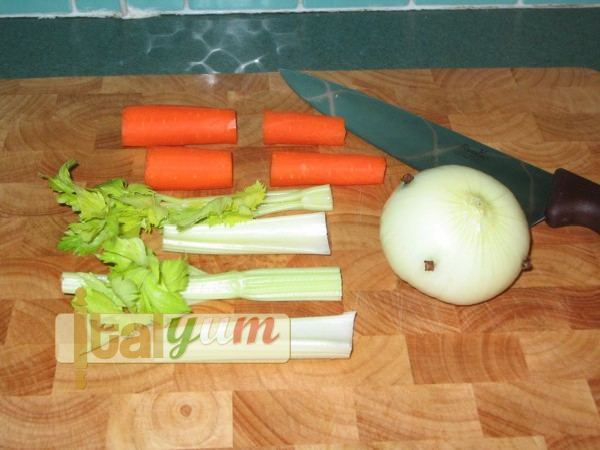
- Fill a big stock pan with cold water. The water should be enough to cover the meat you are going to put into the pan. Add very little salt to the water, just a couple of teaspoon of salt; this is because the real final seasoning stage of the stock will be done at the end, after the meat has boiled thoroughly. Using too much salt at the start will spoil the stock because at the end you may end up with a very salty stock.
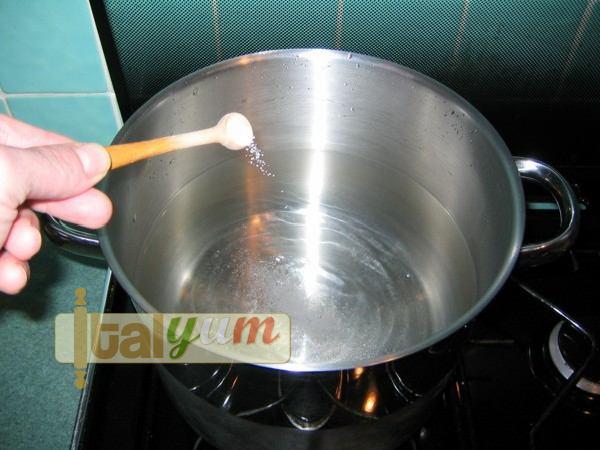
- Add all the vegetables into the cold water and bring to the boil.
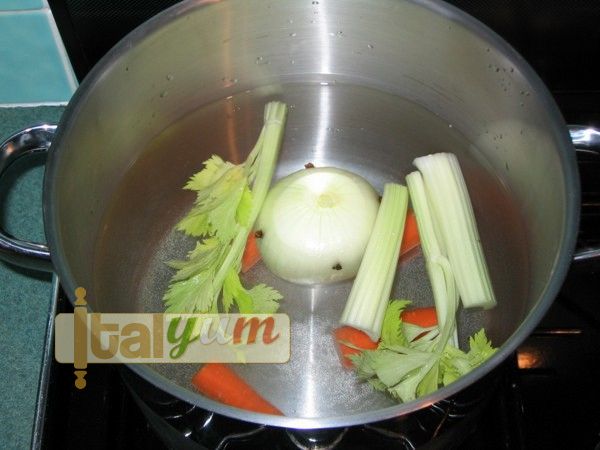
- When the water has reached boiling point, immerse the ox tongue into it.
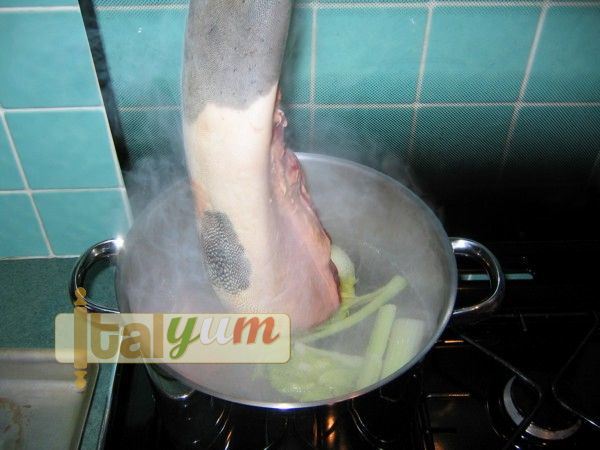
- The ox toungue should be fully immersed into the water. Adding the tongue into the water, will cool the water down, so bring quickly the water back to the boiling point and leave to boil for about a minute or so.
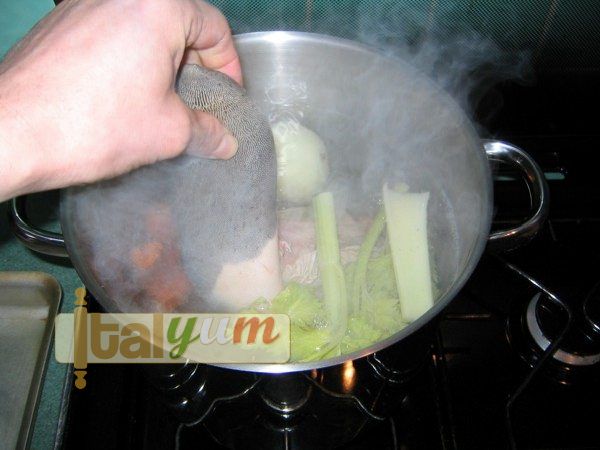
- Then, bring the heat to very low, and set the water to a simmering point. Simmer for 3 hours and, if necessary, add boiling water as the liquid reduces.
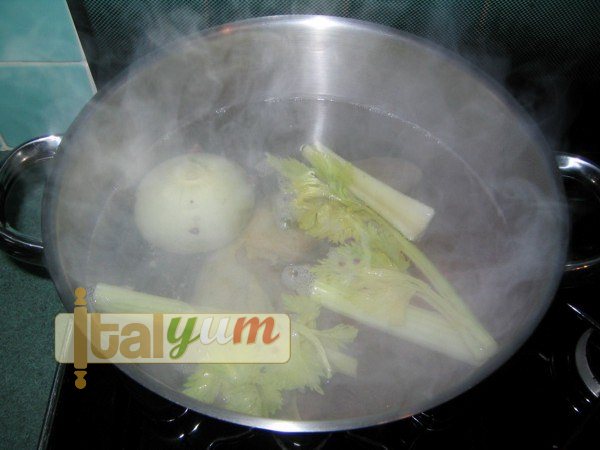
- Meanwhile, we can prepare the salsa verde. The picture shows the ingredients listed at the start.
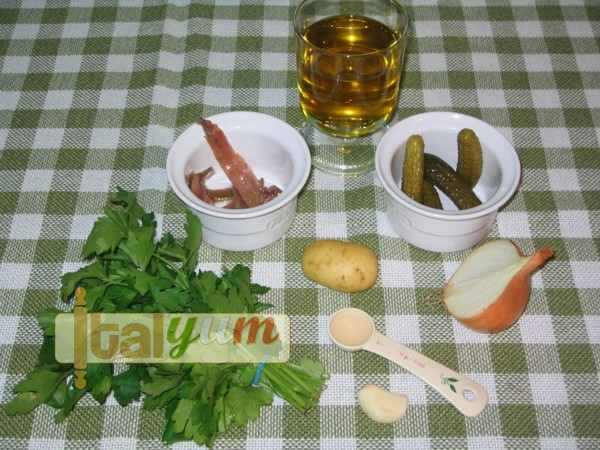
- Reduce the garlic to a purée consistency. An easy way to do it, is by working the garlic against the chopping board with the side of a large blade.

- Next, place the salsa verde ingredients onto a chopping board, with the exception of the small potato which should be boiled first.
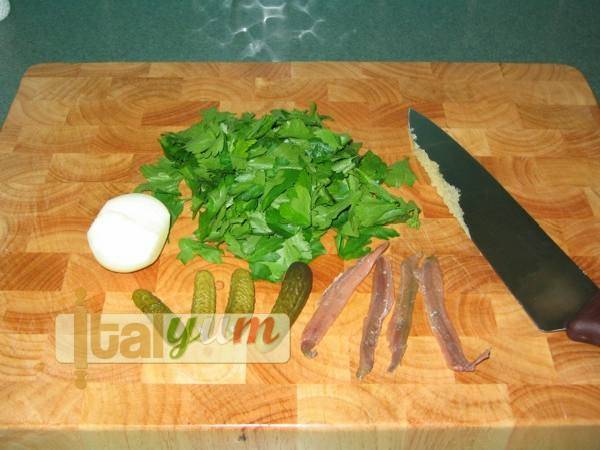
- Peel the potato and boil it until soft.
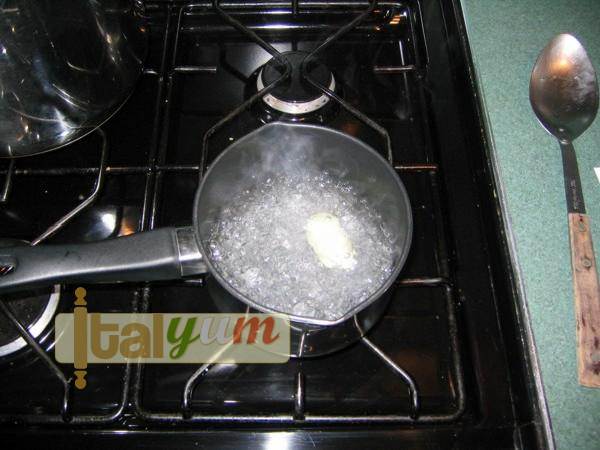
- Meanwhile, have a look at the big pan and remove any scum that comes afloat. Remove the scum regularly so that you keep the liquid clear.

- Here, the picture shows when I am adding some boiling water from the kettle. This was after 2 hours simmering, when the liquid started to go below the ox tongue. Add just enough water to keep the meat covered.
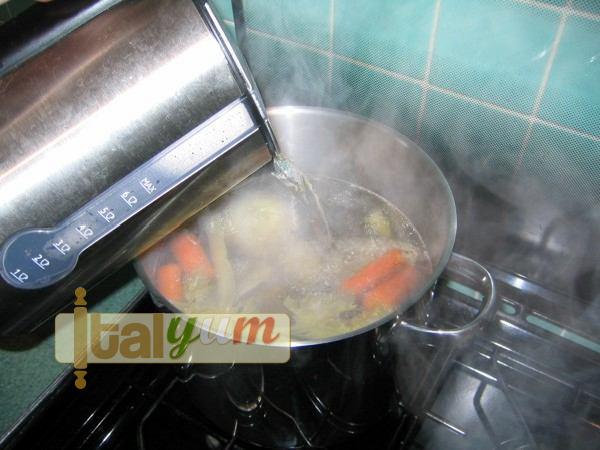
- Once the potato has boiled, chop all the ingredients, including the potato.
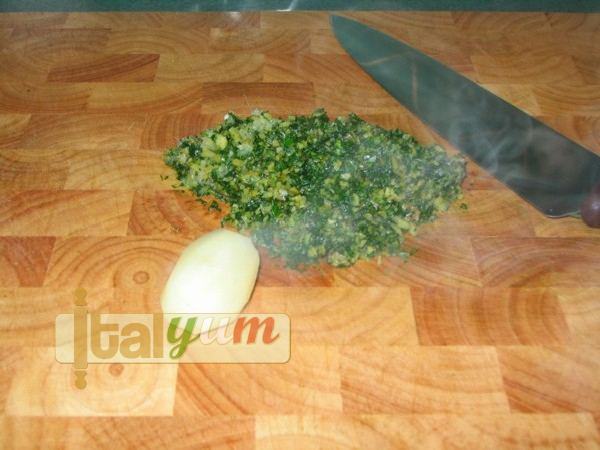
- It’s a work of patience, so take your time and finely chop everything. I prefer not to use a food processor because I don’t want a pulp.
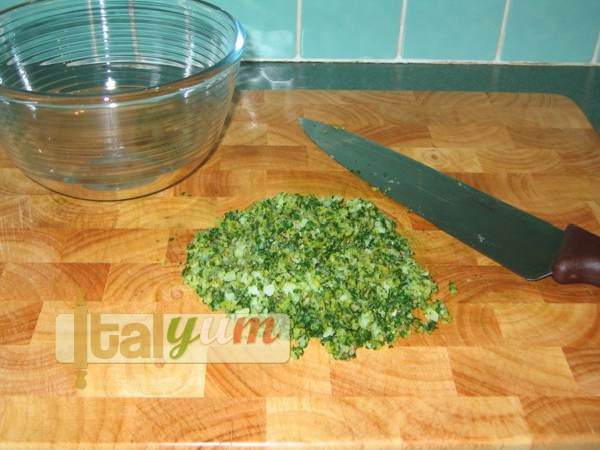
- Add the olive oil and if you think that the salsa looks too dry, then add some extra oil, so that you achieve a smooth consistency.

- Add a teaspoon of white vinegar.

- Season with black pepper, just a hint. Don’t add salt; you will see why later.
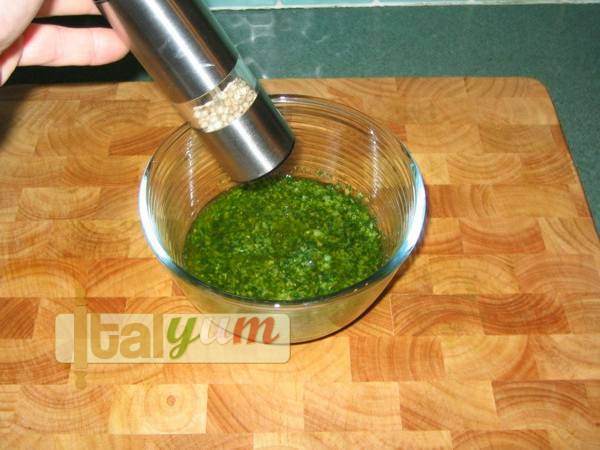
- Stir and set aside for a later stage.
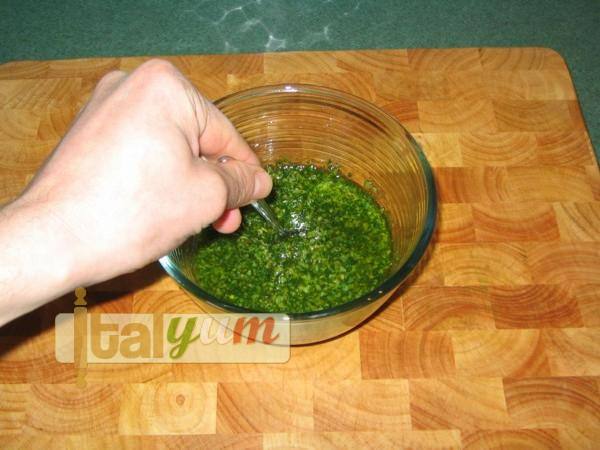
- A few minutes before serving the salsa verde with the meat, warm the salsa with a bain marie.

- Now, it’s time to deal with the mostarda di Cremona. For those who have never heard about mostarda, this is made of candied fruit preserved in a mustard flavoured syrup. It is very hot and in Italy it is served with mixed boiled meat (but it also good with a selection of hard cheese).
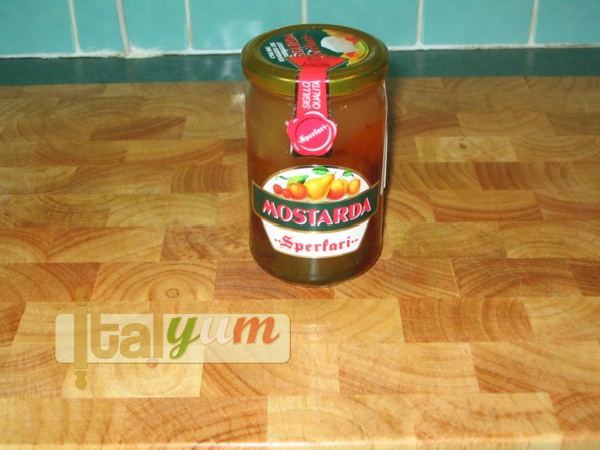
- Put the mostarda into a small dish, then with the help of a fork and knife, cut the fruits into small pieces.
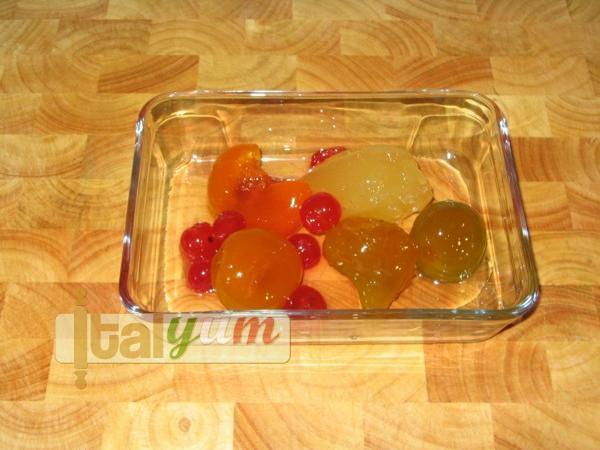
- I like to leave the cherries whole because they help with presentation.

- Divide the fruits into small dishes (I personally choose to have one dish for every two persons), add some of the syrup from the original mostarda jar and set aside.

- After 3 hours simmering, take the ox tongue out of the pan and place it onto a working surface.
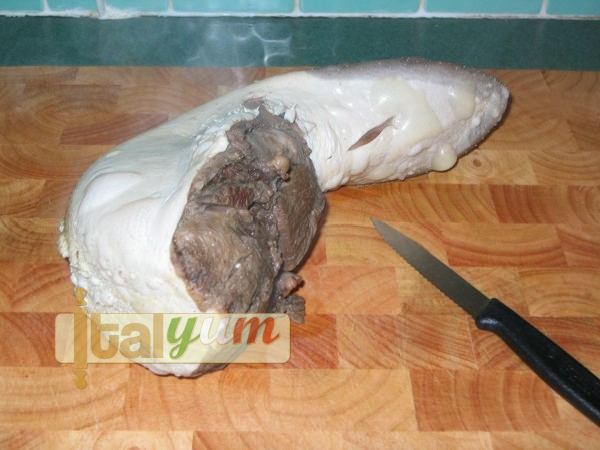
- Using a small knife, remove the skin off the ox tongue.
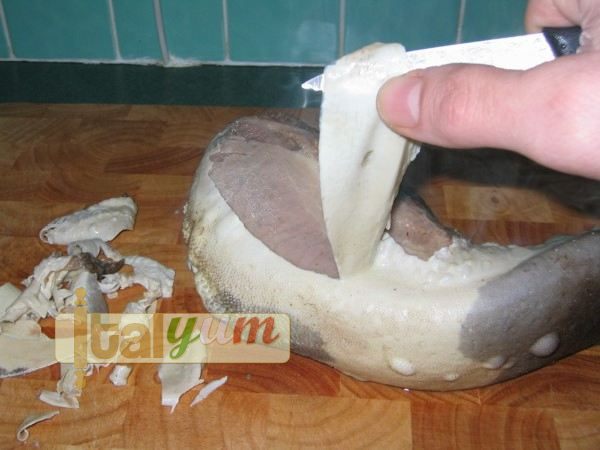
- The picture shows the ox tongue with the skin completely removed.
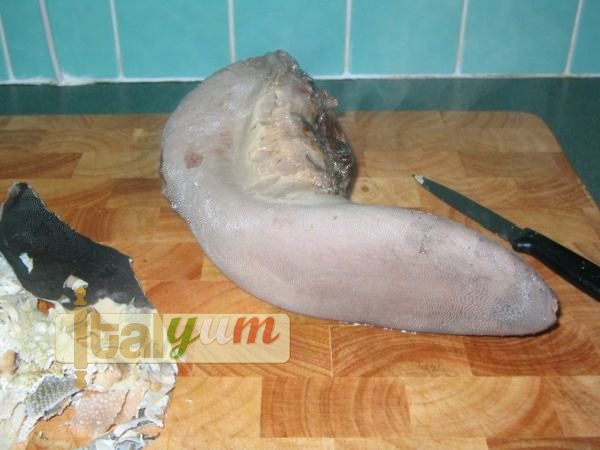
- Return the ox tongue into the pan and simmer for another 30 minutes.
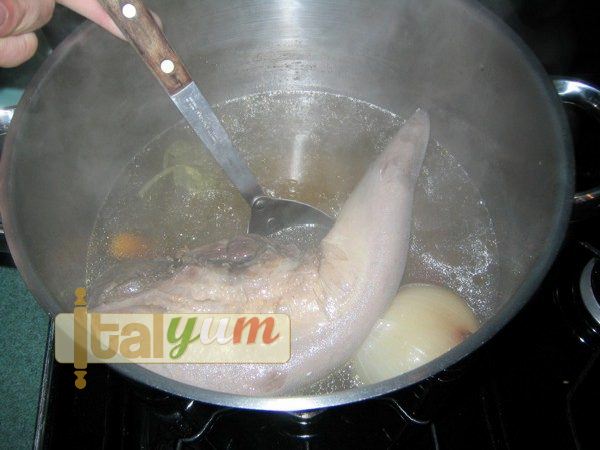
- This is the ox tongue after 3 1/2 hours simmering.
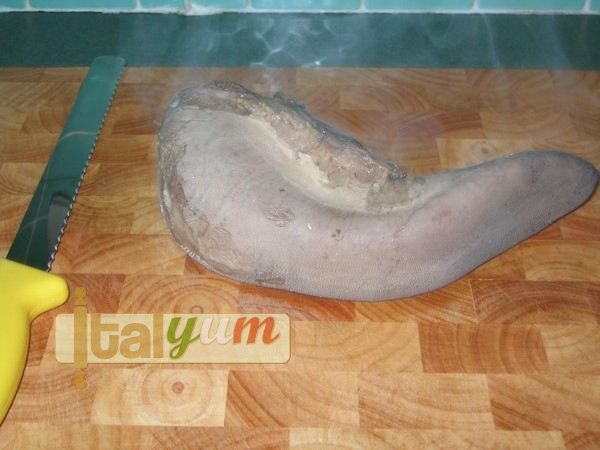
- Slice the ox tongue with a carving knife. Slices can be about 6 mm (1/4") thick.
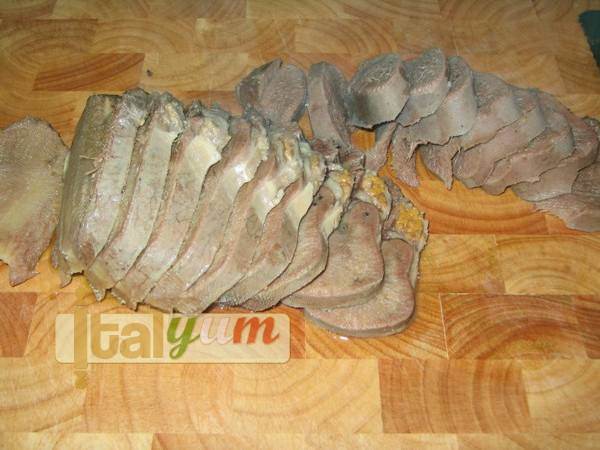
- Finally, lay the slices on a warm plate and serve with salsa verde, mostarda Cremonese and also some salt flakes you can scatter over your slices after having put some salsa verde.Alternativley, you can serve the meat in a deep dish, with a couple of ladles of its stock, or you can use the stock to make a starter minestrone, just adding some canned chickpeas and crashing by hand some dry pasta sheets (the ones used to make lasagne), then boil the pasta until cooked and that's it. Buon appetito!
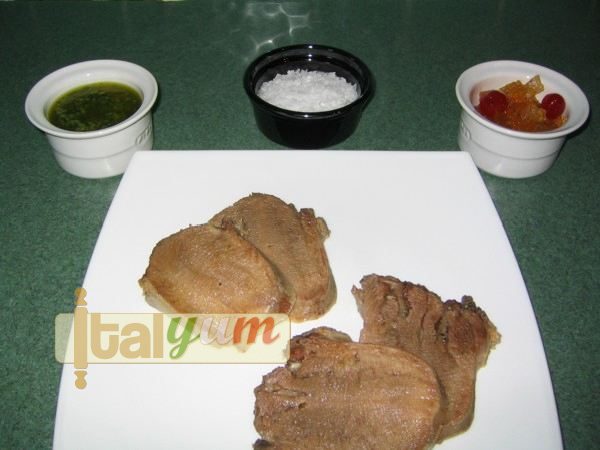
- Let’s have a chat about cotechino sausages. You can find some pre-cooked varieties in most of the Italian deli shops and, as I said before, it just takes around 30 minutes to cook them.

- Usually,pre-cooked cotechino sausages (or zampone) come in a vacuumed pack and most of the time you put the whole pack straightaway into the boiling water (anyway, always read the cooking instruction written on the box).
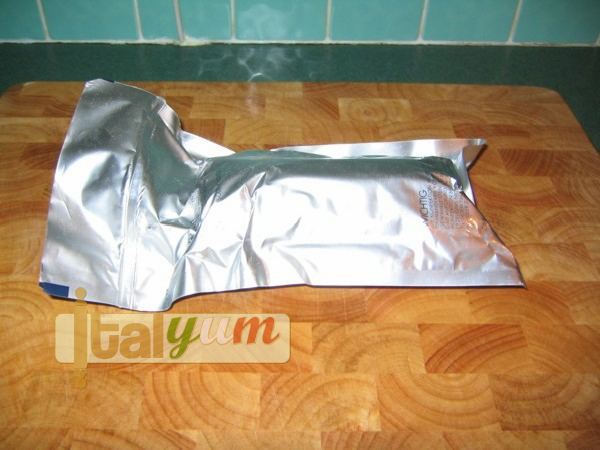
- In Italy, when processing pork meat, we use everything from the pork, and beyond the usual preparation of salame, pancetta, coppa etc. we also make a type of salame that can be boiled.If you have the chance of visiting Cremona, or any area around it (like Crema, Piacenza or Brescia) I would try to get one “salame da pentola” from the local butchers and ask the butcher how long it has to boil for because it depends on the size and on what they put inside. For example, in Brescia, you can find the “osso di stomaco”, a variety that belongs to the cotechino/salame family and usually it needs to boil for 2 hours. A good “salame da pentola”, is a real treat and it would make your bollito misto a great feast.
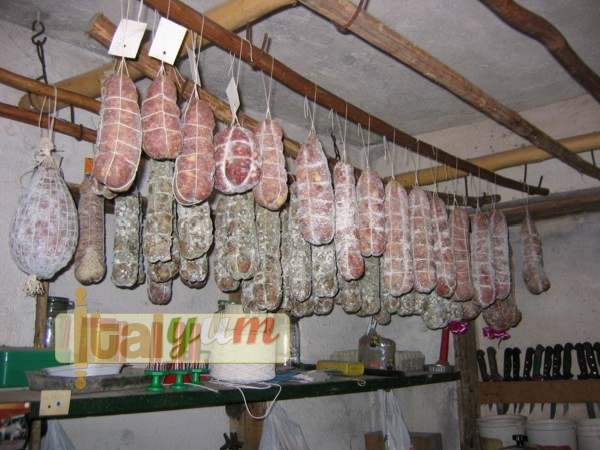
Nutrition
Calories: 650kcal
Tried this recipe?Let us know how it was!



